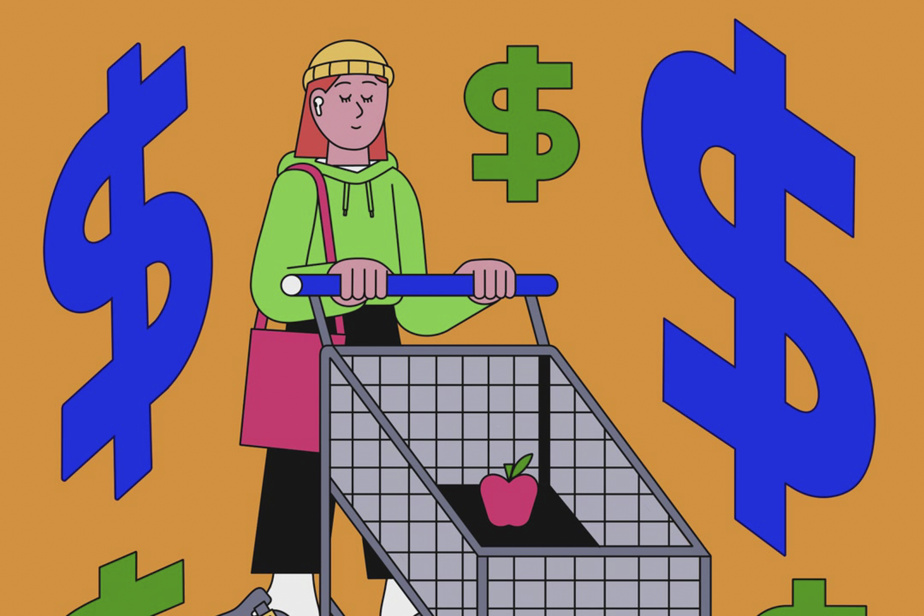Alexander MacKay co-directs the Pricing Lab at Harvard Business School, a research center on corporate pricing methods. Since the pandemic, he notes that companies are more inclined to experiment when setting prices.
Large companies that previously raised their prices once a year are now doing so more frequently. With digital price labeling, it’s done at the touch of a button. In all spheres of the economy, managers in search of maximum profit grope to establish the highest price they can charge consumers before they stop buying.
Supply disruptions have driven up costs during the pandemic, forcing companies to rethink their pricing strategies, MacKay says. This fueled a trend toward tougher pricing, which showed that companies could dare to raise prices without driving away consumers. Costs are now falling, but experimentation continues.
“Prices may change more quickly than before. It could be up or down, except that companies generally lean up, not down,” McKay observes.
Companies are seeking to protect profits accumulated since the pandemic. For the giants of the S index
Companies as diverse as Apple and Williams-Sonoma reported record third-quarter margins. For its part, Delta Air Lines said its international routes generated unprecedented profits over the summer.
Margins dipped somewhat last year, but have just returned to levels that would have set records before the pandemic.
“Companies are maintaining, or even increasing, their margins because they are not passing on cost reductions to consumers,” says Albert Edwards, a strategist at Société Générale, who called recent margins “obscene.”
Today, businesses seek to establish the optimal price, which will protect profits, at a crucial time: high interest rates and fewer savings are making some buyers more price sensitive.
Many companies could protect their profits simply by maintaining their prices while their costs fall. But some are considering ways to push prices higher as demand cools and inflation slows.
“I believe that companies don’t have the monopoly power to raise prices whether we like it or not,” says Ed Yardeni, CEO of Yardeni Research.
We now prioritize margins over market shares.
Wanting to increase margins, even if we sell less, contrasts with the cautious approach of the years during and after the 2009 recession. At the time, we often agreed to lower prices to attract cost-sensitive consumers. For hotels, the goal was for every room to be occupied.
“During the Great Recession, we agreed to lower rates until there was a head on every pillow,” recalls Leeny Oberg, financial director at Marriott.
Today, “the industry has obviously learned lessons,” and in recent years Marriott has aimed for a better balance between maximizing revenue and profits, she says.
Retailers, often surprised by consumer volatility in recent years, are now talking about “inventory discipline”: keeping fewer products in stock and never selling at clearance prices. We prefer to sacrifice some sales by lacking products rather than selling them at a discount to the detriment of the bottom line.
Clothing retailer American Eagle Outfitters has increased margins by “maintaining tight inventory and promotional discipline,” company CEO Jay Schottenstein said during a November conference call.
Businesses learned they could charge more than they thought.
Some consumers forego certain purchases because of rising prices, but not all. So you have to experiment.
He concludes that his products were not selling for enough at the start of the recent period of inflation. “They were undervalued,” he said recently.
Keurig Dr. Pepper increased prices of its beverages in the U.S. by 7% in the most recent quarter and reports “strong gross margin expansion.”
Other leaders believe they can charge a higher price by presenting a product or experience as premium.
“Despite the current economic environment, consumers continue to opt for the high end,” says Melissa Thomas, chief financial officer of Cinemark theaters.
But all that could change.
Kellogg, the cereal maker, raised prices sharply without losing customers – what economists call a situation of low price elasticity.
But recently, consumers have started to react to the price shock.
“We are gaining market share among middle- and upper-income consumers,” Ian Borden, McDonald’s chief financial officer, reported during an earnings conference call in October, while noting that lower-income customers were in decline. difficulty.
The ability to raise prices – or keep them high – may not last.
As companies scrambled to protect margins, the economy remained robust, despite fears of a slowdown. Global growth has continued, consumer spending has increased, and the long-predicted recession has not arrived.
But if this momentum falters, will companies be able to protect their profits?
“Clients are rebelling,” says Paul Donovan, chief economist at UBS Global Wealth Management. “We have reached the breaking point. »
